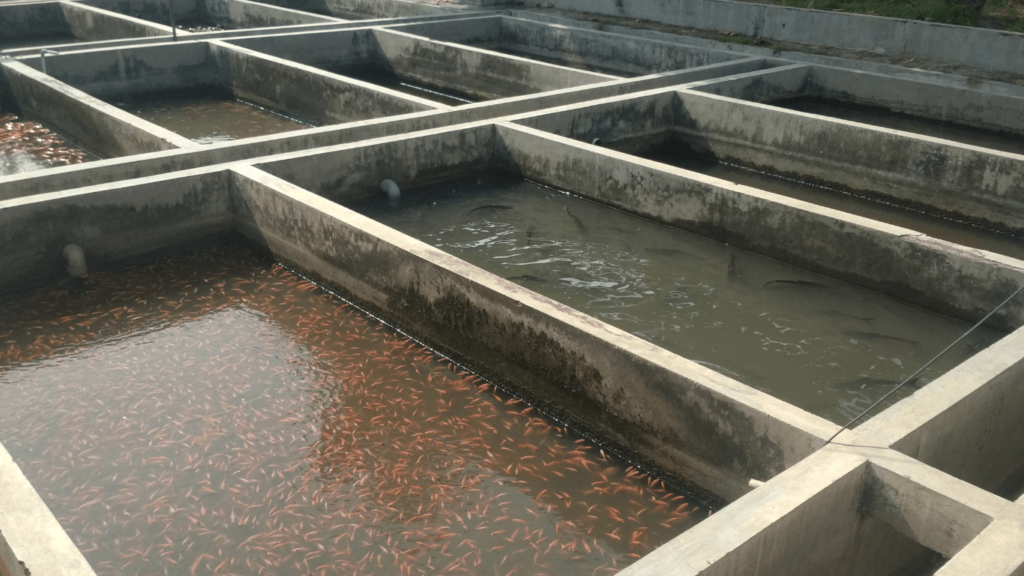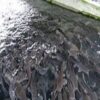- このトピックは空です。
- 投稿者投稿
- 3月 19, 2025 12:25 am #597154

Concrete ponds are a popular choice in aquaculture, ornamental gardening, and water feature installations due to their durability, strength, and aesthetic appeal.
They offer a controlled environment for fish farming, water storage, and decorative purposes, making them a preferred option for many homeowners and farmers. However, despite their advantages, concrete ponds come with several disadvantages that can affect their functionality, maintenance, and overall performance.
This article will delve into the various disadvantages of concrete ponds, providing insight for those considering this option for their water management needs.
1. High Initial Construction Costs
One of the primary disadvantages of concrete ponds is the high initial cost of construction. Concrete ponds require significant investment in materials, labor, and skilled workmanship to ensure proper design and construction.
The price of concrete, reinforcing materials like steel, and labor costs can add up quickly, making concrete ponds more expensive compared to other pond types like earthen or liner ponds.
Additionally, the need for proper site preparation, excavation, and curing time further increases the overall cost. For farmers or homeowners on a tight budget, this high upfront cost can be a major barrier to constructing a concrete pond.
2. Risk Of Cracking And Structural Damage
Concrete is a durable material, but it is not immune to structural issues. Over time, concrete ponds may develop cracks due to factors such as ground movement, temperature fluctuations, and improper curing during construction.
Cracks compromise the pond’s integrity, leading to water leakage and potential loss of stock in aquaculture ponds. Repairing cracks can be labor-intensive and costly, requiring specialized materials and expertise.
Structural damage may also affect the pond’s ability to maintain water levels, impacting its efficiency and the health of aquatic life or plants housed within it. Regular inspection and maintenance are necessary to address these issues promptly.
3. Algae Growth And Slippery Surfaces
Concrete ponds are prone to algae growth due to the material’s porous nature, which allows nutrients to accumulate on the surface. Algae can turn the pond water green, reduce oxygen levels, and create an unhealthy environment for fish and plants.
Excessive algae growth requires regular cleaning and the use of algaecides, which can increase maintenance efforts and costs. Additionally, the smooth surface of concrete ponds can become slippery when wet, posing a safety hazard for individuals working around the pond.
Slippery surfaces increase the risk of falls and injuries, particularly in aquaculture farms or residential settings where daily access to the pond is necessary.
4. Temperature Regulation Challenges
Concrete ponds can pose challenges in regulating water temperature, which is crucial for the health of fish and aquatic plants. Concrete absorbs and retains heat, leading to higher water temperatures during hot weather and cooler temperatures during colder months.
This temperature fluctuation can stress aquatic life, affecting growth rates, reproduction, and overall health. In regions with extreme temperatures, maintaining a stable pond environment may require additional equipment, such as aerators, heaters, or shade structures, further increasing operational costs.
For aquaculture farms, temperature instability can significantly impact fish farming productivity and profitability.
5. Environmental Impact And Sustainability Concerns
The environmental impact of constructing and maintaining concrete ponds is another significant disadvantage. The production of concrete involves the emission of large amounts of carbon dioxide, contributing to environmental pollution and climate change.
Concrete ponds are also less environmentally sustainable compared to earthen ponds, as they do not support the natural filtration processes that occur in soil-based ponds. Moreover, the impermeable nature of concrete prevents groundwater recharge and can affect the natural water cycle.
For those aiming to maintain environmentally sustainable practices, concrete ponds may not align with their ecological goals, prompting the need to explore alternative pond construction methods.
In conclusion, while concrete ponds offer durability, strength, and aesthetic appeal, they come with several disadvantages that must be carefully considered.
High initial construction costs, the risk of cracking and structural damage, algae growth, temperature regulation challenges, and environmental impact are significant drawbacks that can affect the pond’s functionality and sustainability.
Proper maintenance, regular inspections, and thoughtful design can mitigate some of these issues, but farmers and homeowners must weigh the pros and cons before deciding on a concrete pond.
Understanding these disadvantages allows for informed decision-making, ensuring that the chosen pond type meets both operational needs and environmental considerations.
Read Also: Health Hazards Associated with Fish Ponds in Agriculture
- 投稿者投稿
- このトピックに返信するにはログインが必要です。






